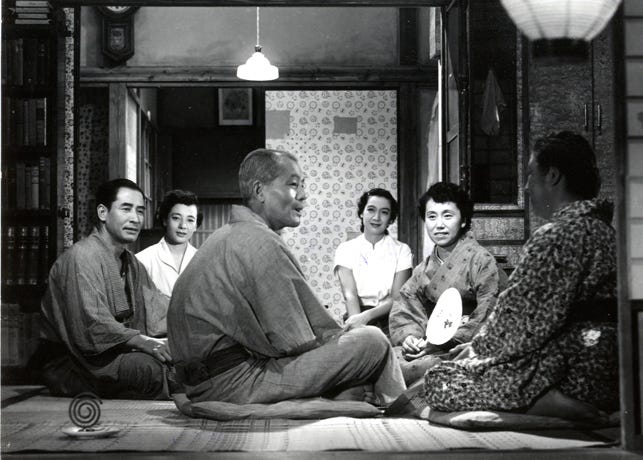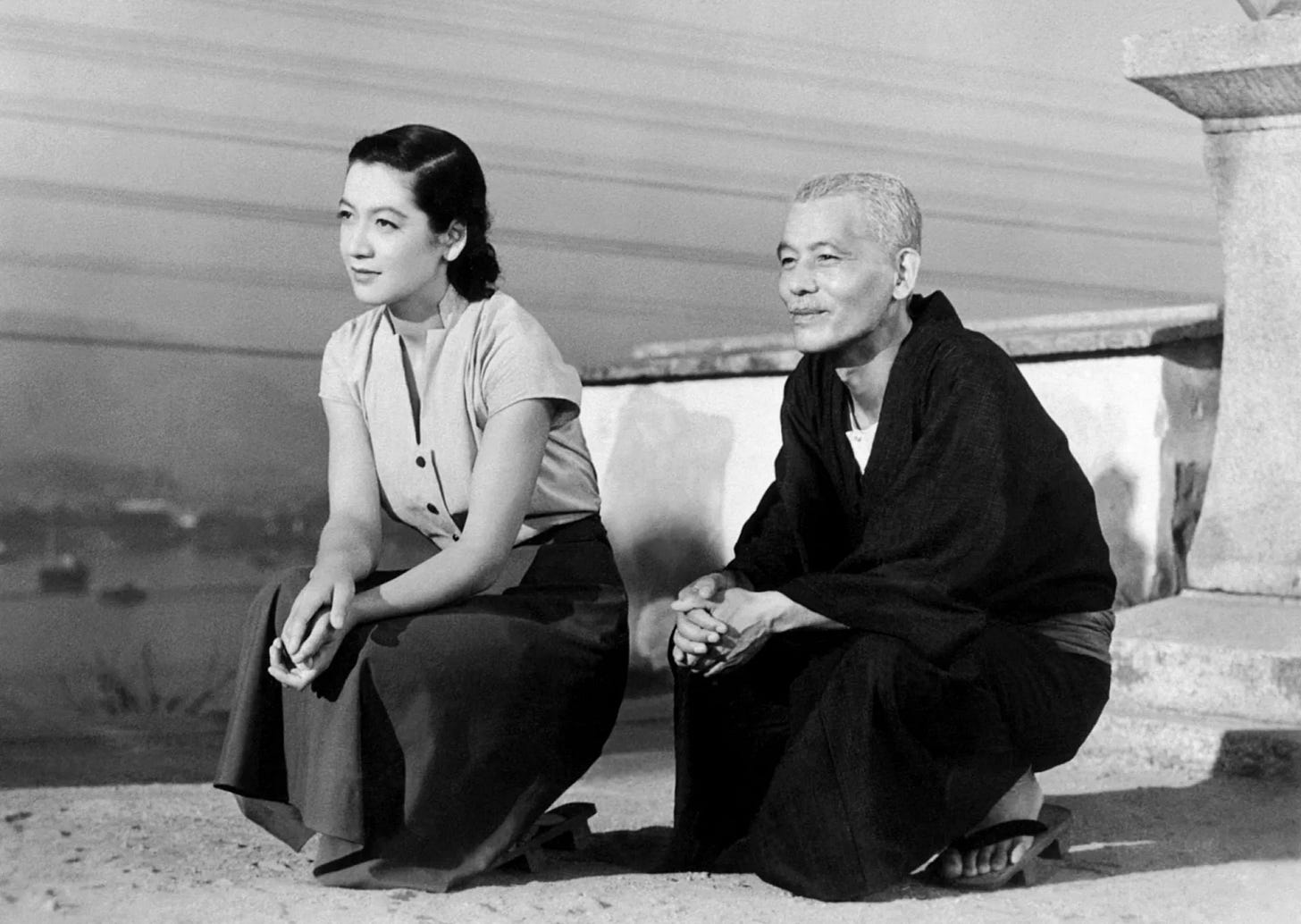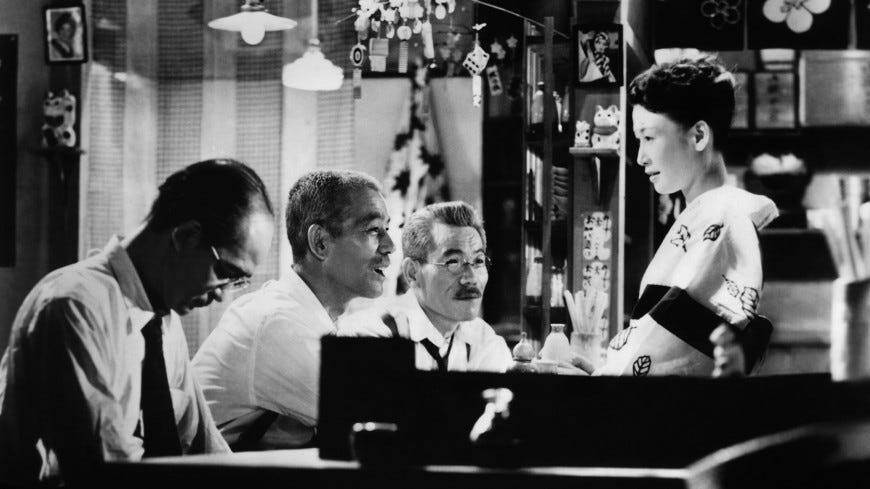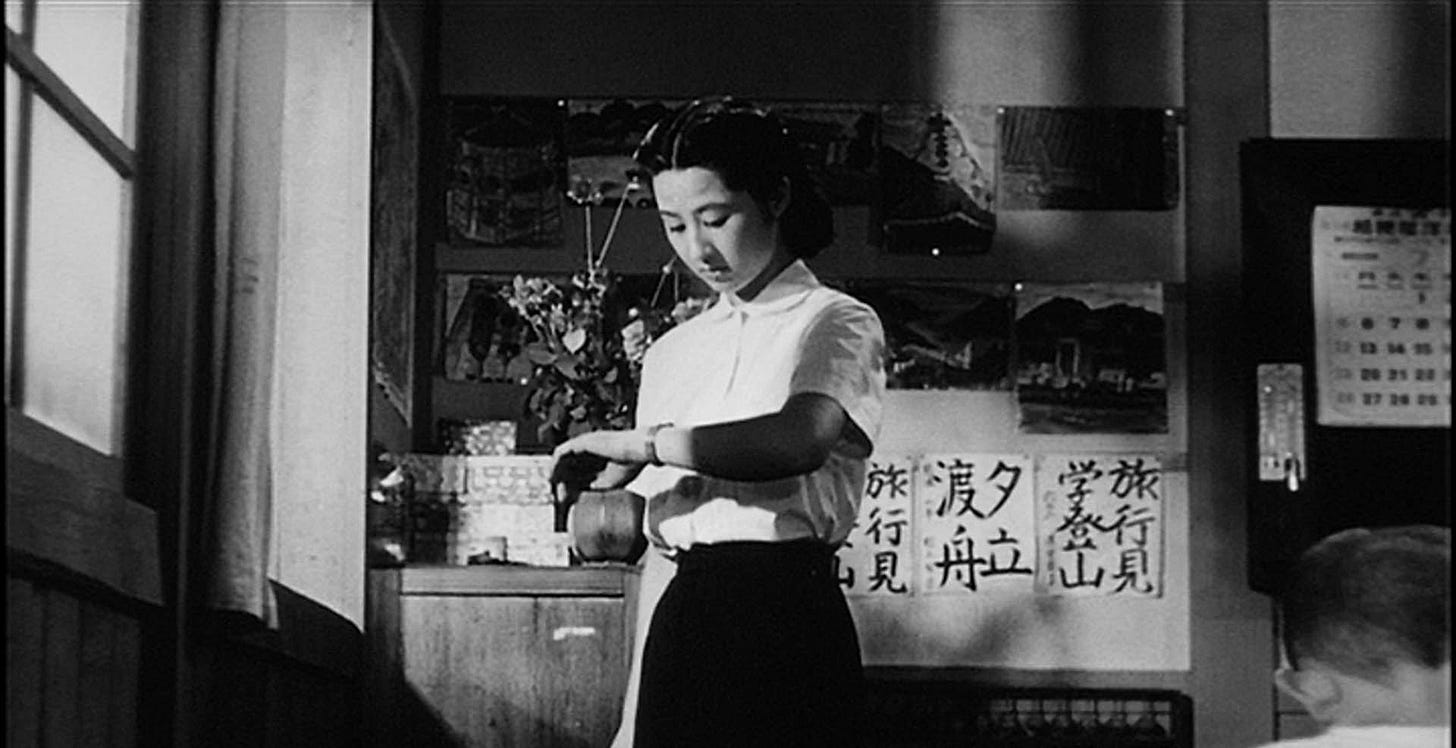Tokyo Story: Time, Place, and the Weight of Memory
Ozu's Masterpiece Reveals We Don't All Live in the Same Present
Editors Note: Ben-Zion Jaffe is an old friend and one of the deepest thinkers I know on a wide array of geopolitical and philosophical issues. A few months ago we were discussing the psychology of post-WWII Japan, which inevitably led to a discussion of Yasujiro Ozu’s masterpiece “Tokyo Story”.
Ozu’s work often finds itself atop intimidating “Best of” lists - but as Ben notes here, its his deep exploration of how family, time, love, guilt and grief can create different realities within families and societies that resonate across all cultures. - D.H.
Most viewers see Yasujiro Ozu’s Tokyo Story (1953) as a straightforward tragedy about ungrateful children and abandoned parents. They’re not wrong—they’re just not looking closely enough at what else Ozu is exploring: the way different characters live fundamentally different experiences of time. These themes are most poignantly embodied by Noriko, the charming daughter-in-law who anchors much of the story and quietly stands apart from her peers. While many characters in Tokyo Story are preoccupied with physical movement—traveling from place to place—Noriko’s displacement is more existential. Her entire being seems suspended, caught between past and future.
The Geography of Disconnection
The film is sprinkled with conversations about where characters are, where they need to go, and how they will get there. In the opening scenes, the elderly couple Shūkichi and Tomi Hirayama prepare to travel from their quiet home in Onomichi to visit their adult children—and Noriko—in bustling post-war Tokyo. Once there, however, they find themselves adrift as none of their children sincerely welcomes them. In one quietly devastating scene, they sit together on a patch of grass outside a derelict air raid shelter, unsure where to go next. In Ozu’s typical slow and low angle camera work, the couple sits outside a relic with their backs angled so we can barely see their profiles. Elsewhere, unseen, their children rush through a new world that has no place for them. Only Noriko and an old friend are mentioned as potential destinations. In the following scene, as they overlook Tokyo, Tomi remarks, “If we ever got lost, we’d never find each other again.” The scale of the city swallows up visitors and families alike.
The Hirayamas’ children in Tokyo offer a sharp contrast in generational values and its relationship to motion and urgency. While their parents wander aimlessly, the younger generation is constantly on the move—but their motion follows the mechanical rhythms of urban life: train schedules, business hours, the institutional time of modern capitalism. Their emphasis on mobility necessitates the jettisoning of extra weight, namely their parents. For them, familial ties are a burden—something that threatens to slow their professional and social momentum.
The Hollowness of Motion
And yet, we are rarely told exactly what their urgent obligations are. During multiple discussions about train schedules—including, most strikingly, the day after Tomi’s funeral—none of the children articulate what they’re rushing off to. Even their son from Osaka, having missed the funeral entirely due to business travel, joins his siblings in leaving the very next day.
The hollowness of their busy lives isn’t lost on the older generation. In an earlier scene in which Shūkichi drinks with old friends, he laments the younger generation’s lack of ambition. Speaking of his son’s modest medical practice, he sighs, “We can’t expect too much from our children. Times have changed, and we have to face it.” If they lack ambition, then what are they rushing toward? The answer seems to be movement as an ends, not a means, shuttling to the empty rhythms of modernity.
Tokyo as Temporal Symbol
Ozu offers more than social critique. Tokyo Story is about belonging as much as it is about morality. Tokyo’s vastness is not just geographic—it is temporal, a symbol of the future. Unlike the past, the future has no memory. Even at Tomi’s funeral, a moment when most would be moved to reflect on the past and a sense of familial belonging, time moves too quickly. Noriko is the only character who seems to resist this flow, choosing to remain behind with her father-in-law rather than catch the next train out of town with his biological children.
Noriko is the most sympathetic of the younger characters. (Kyōko, the youngest daughter, also sets herself apart in a brief but pointed conversation with Noriko, criticizing her older siblings for focusing on their inheritance and leaving so soon.) A war widow, Noriko maintains her connection to Shūkichi and Tomi. Her apartment is sparse, save for a single photograph of her late husband, Shoji, placed near the entrance—a subtle but persistent invocation of past loss. Tomi urges her to remarry, sensing Noriko’s refusal to move on. While others have made peace with the passage of time, Noriko seems suspended within it.
The Weight of the Watch
This connection to the past comes to a head after Tomi’s death. In a tender scene, Shūkichi tells Noriko what has remained unsaid until that point: that she has done more for him and Tomi than their biological children. As a token of gratitude, he gives her his wife’s old watch. “It’s old-fashioned, I believe,” he says, “but she used it since she was your age. Take it—for her sake.” By mentioning the similarity of the ages of when they obtained the watch, Tomi’s past is transposed with Noriko’s. Noriko breaks down in tears. As she sobs, Shukichi reflects, “It’s strange. We have children of our own, yet you’ve done the most for us.”
In the scene following Noriko’s acceptance of the watch, Kyōko is shown teaching in a classroom. Glancing at her wristwatch, she realizes Noriko’s train is passing and rushes to the window to see it go by the school. On the train, Noriko sits clutching the gifted watch. Ozu’s visual language quietly but precisely juxtaposes two relationships to time: Kyōko checking her watch to synchronize with the train schedule (institutional time) while Noriko clutches hers as a memorial object (lived time). These are fundamentally different temporal experiences happening simultaneously in the same moment.
The Ambiguity of Memory
The watch becomes more than a keepsake—it is a bridge between Noriko and her mother-in-law, a vessel of memory. But its meaning is ambiguous. Is it a memento that finally allows Noriko to move forward, or another object anchoring her in the past? Ozu leaves the question open. What remains is a fractured family, and a young woman out of step as the world advances around her.
In our own era of constant motion—checking phones like Kyōko checking her watch—Noriko’s suspension feels less like paralysis than resistance to an onward march to nothingness. Ozu suggests that being “out of step” might be the only way to remain human in a world that confuses movement with meaning, that mistakes vivaciousness for lived experience. The tragedy of Tokyo Story isn’t only that children grow apart from their parents, but that modernity creates temporal experiences so different that people can occupy the same space while living in entirely different worlds.
Where to Watch
Tokyo Story is available to stream on HBO Max and the Criterion Channel.
A remastered blu-ray edition with special features is available from the Criterion Collection









